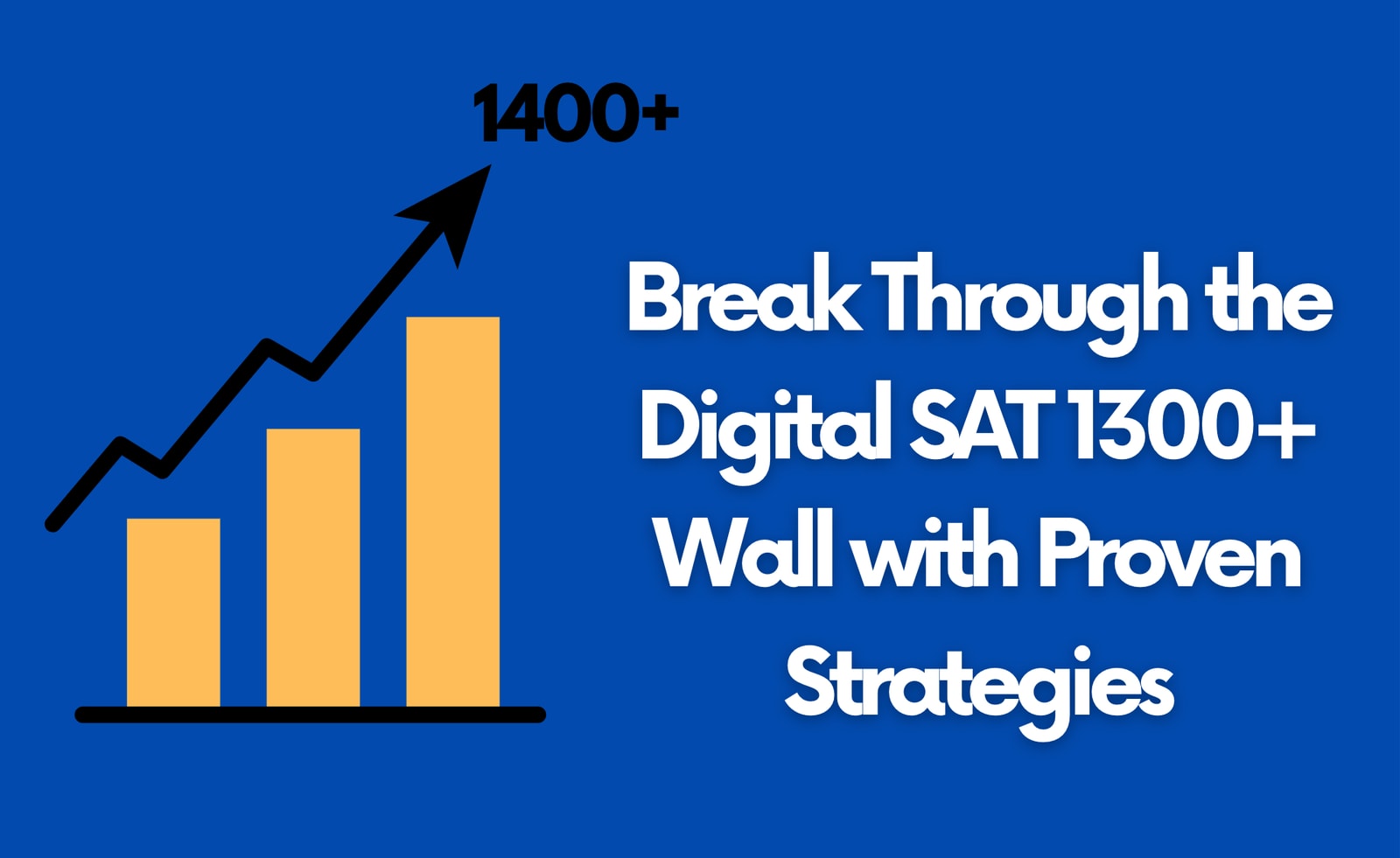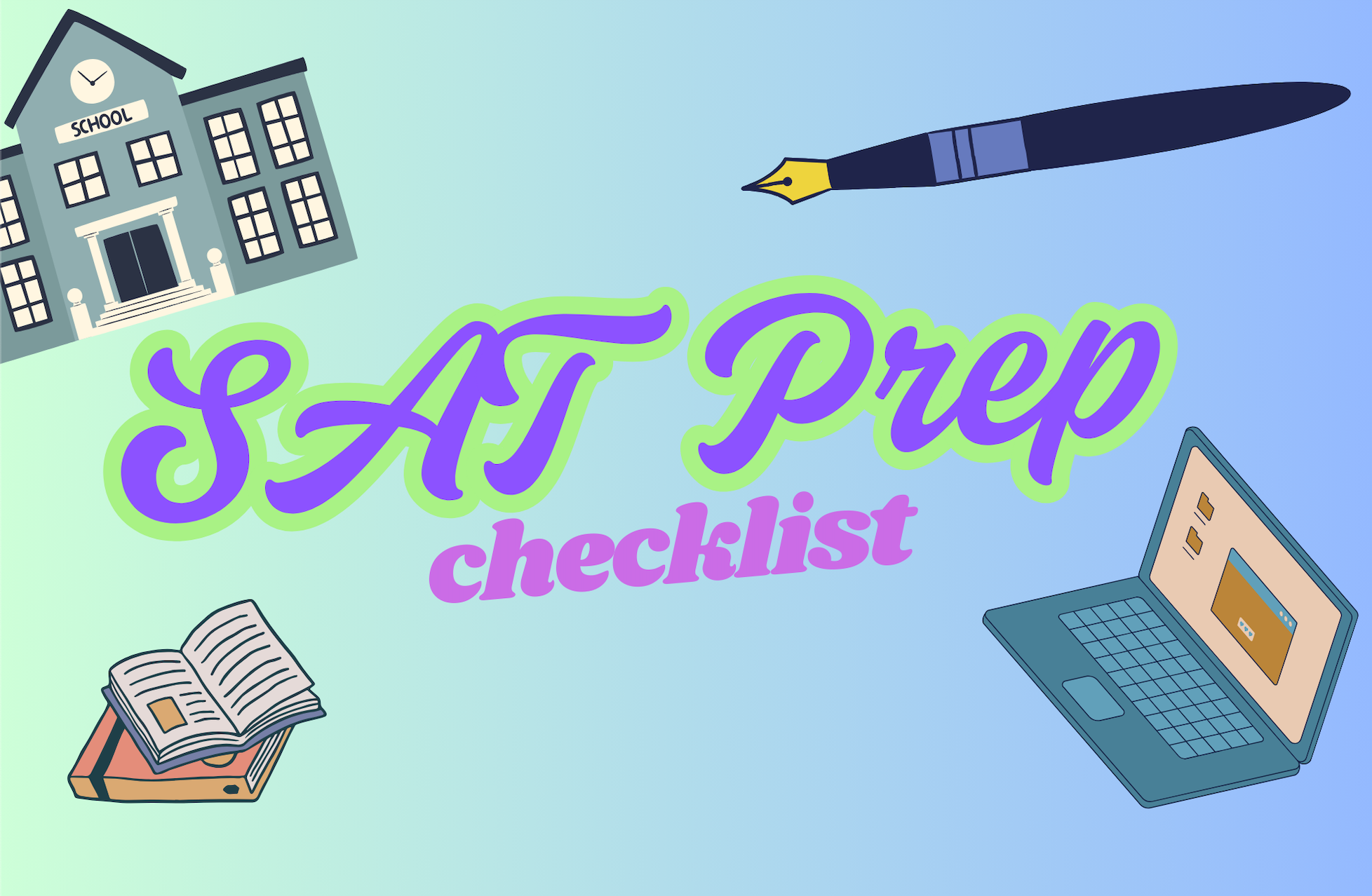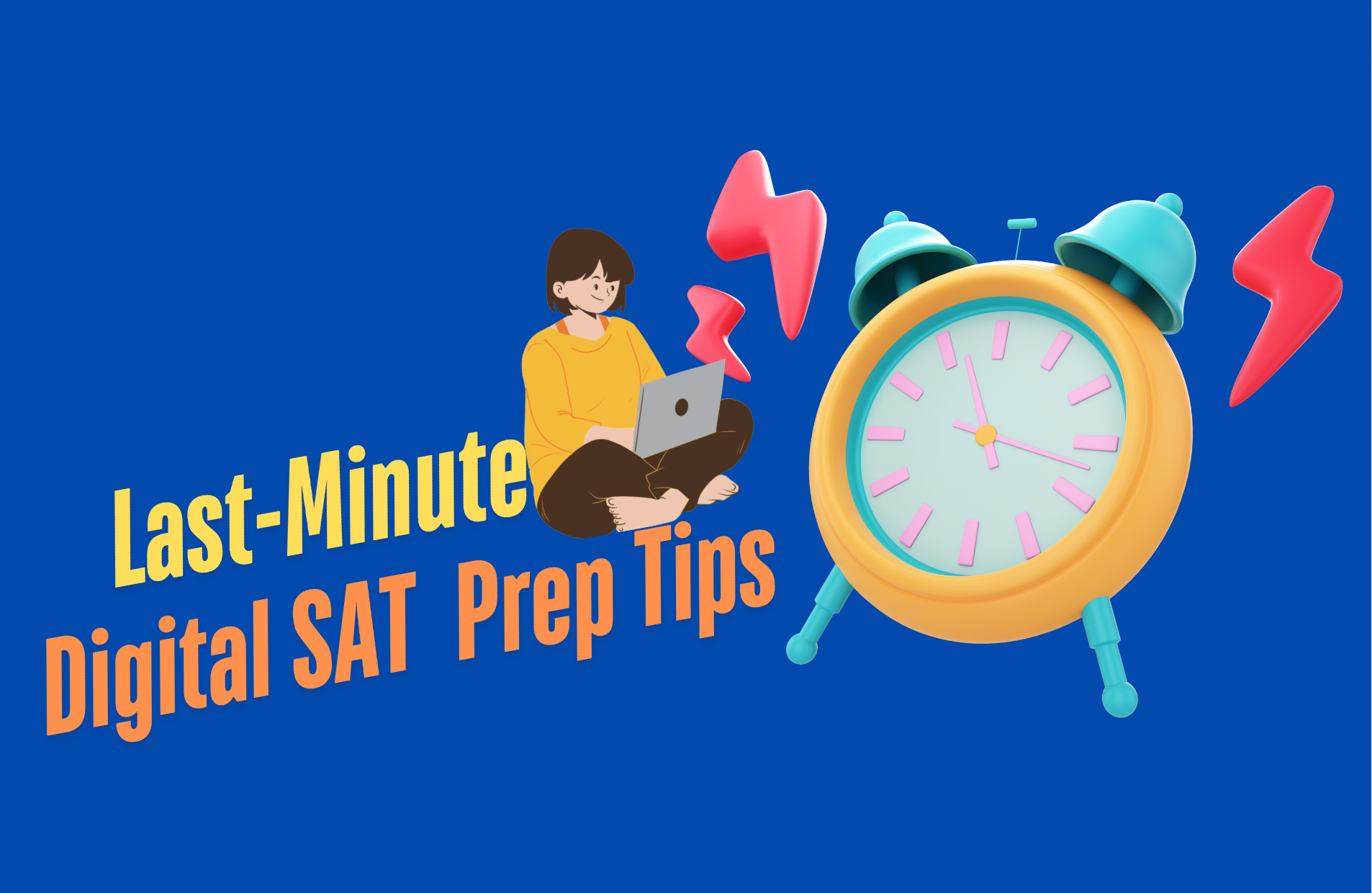Breaking the Digital SAT 1300+ Plateau with Proven Strategies
Author
Phoenix Wilder
Date Published

If you are preparing for the Digital SAT and currently hovering around 1300–1350, you are not alone. Many students find themselves in this exact position—frustrated, stuck, and wondering if they’ve already hit their ceiling. Perhaps your scores rose steadily from 1100 to 1200, then to 1250, and eventually to 1300. But now, no matter how many practice sets you complete or how many hours you spend reviewing content, progress seems to stall.
This situation is incredibly common for ambitious students aiming for 1400+, especially in the new adaptive format of the Digital SAT. The truth is, the strategies that pushed you to 1300 will not be the same ones that carry you further. Achieving top scores requires not just knowledge, but also strategy, precision, and mindset transformation.
In this article, we will explore why the 1300 plateau exists, the key strategic shifts you need to make, and how to build a study system that turns weaknesses into strengths. Finally, we’ll look at how the Best SAT Score platform provides the exact tools and guidance to help you break through the ceiling and finally see 1400+ on your score report.
Why Students Plateau Around 1300 on the SAT
Reaching 1300 already means you are a strong test-taker: you understand grammar rules, you can handle most algebra problems, and you rarely get lost in reading passages. At this level, you belong to the top 12% of SAT test-takers worldwide. But if you’ve been stuck here for weeks or even months, here’s why:
1. Solid Content Mastery vs. Precision and Accuracy
Getting to 1300 mostly relies on knowing the content: sentence structure rules, probability formulas, linear equations. But moving higher requires eliminating small, often careless errors. For example, you may know how to solve a system of equations, but one sign error or miscopying a number in your scratch notes instantly costs you points.
High scorers are not just knowledgeable—they are accurate and error-resistant. They don’t just solve problems—they verify their reasoning.
2. The Scoring Curve Gets Steeper
Improving from 1100 to 1300 might feel fast: each week you learn new grammar rules, new math formulas, and your scores rise with visible progress. But the SAT is intentionally designed to make the final 200–300 points much harder. The competition is tougher too—at this stage, you are up against students who often have private tutoring, advanced prep courses, and years of targeted practice.
3. Test Fatigue and Mental Barriers
Another aspect that keeps students trapped: burnout and test fatigue. The Digital SAT may only be 2 hours and 14 minutes, but stamina matters. Many students lose focus midway, misread a passage, or rush through the last five math problems. Also, as you approach your “dream score,” anxiety can actually push your scores down because the pressure feels higher.
What Sets 1400+ Scorers Apart
Here’s the important truth: students who break through the wall are not always “smarter.” The difference lies in their approach.
· They treat the SAT as a skills test, not just a content exam. At 1400+, it’s about recognizing patterns, predicting trap answers, and using systematic guessing strategies—not about relearning grammar or algebra.
· They track mistakes ruthlessly. Instead of avoiding errors, they analyze them endlessly, asking:
- Was this a careless mistake?
- Did I misread the question?
- Did I run out of time, or fall for a distractor?
· They practice under true test conditions. No more half-length tests or pausing after each section—they practice just as they will perform on test day.
· They refine their time management strategy. High scorers don’t get stuck. They know when to skip, when to guess, and how to maintain pacing throughout adaptive modules.
Strategies to Break the 1300+ Wall
Now that we understand why the plateau exists, let’s dive into practical strategies you can immediately adopt to push your score forward. We will combine core advice from both research-based study methods and the realities of Digital SAT mastery.
1. Keep a Detailed Study Journal
A study journal is not just about note-taking—it becomes your personal coach. Each incorrect answer is not a failure—it is a goldmine of insight into how your thinking process can improve.
Your study journal should include:
· Problem Log: Record every missed question, the wrong answer you chose, and the correct one.
· Error Analysis: Write down why you missed it: Did you misinterpret the question? Did you lack a formula? Did you run out of time?
· Progress Tracker: After every practice test, log your sectional scores to see if your weak areas are narrowing.
· Strategy Notes: Summarize which solving strategies helped you eliminate wrong answers effectively.
This reflective discipline converts random practice into targeted improvement.
2. Turn Mistakes Into Weapons
Mistakes at the 1300+ level usually fall into four categories:
1. Time Issues – You knew the concept but didn’t finish in time.
Fix: Practice with reduced time limits and learn to skip and return.
2. Question Misinterpretation – You misunderstood the wording or overlooked a keyword.
Fix: Annotate every reading passage actively, and rephrase math questions in your own words.
3. Knowledge/Procedural Gaps – You lack mastery of a formula or rule.
Fix: Use flashcards or structured drills to reinforce weak areas.
4. Careless Errors – Simple mistakes in arithmetic or mis-bubbling.
Fix: Add a step-by-step verification routine before locking in answers.
By classifying mistakes, you stop repeating them endlessly and begin predicting where they might reappear.
3. Use Short Practice Tests with Focus
Instead of only doing full-length tests, add shorter, targeted practice sets of 15–20 minutes:
· Warm-Up (2–3 minutes): Easy review questions to build momentum.
· Core Practice (10–12 minutes): Focused drills on high-value question types—data interpretation, command-of-evidence, linear systems, punctuation rules.
· Review (5 minutes): Immediate error analysis.
These short bursts build stamina while sharpening specific skills you’ll need in the adaptive SAT format.
4. Shift From Content Review to Test Strategy
After 1300, re-reading grammar lessons will give diminishing returns. Instead, focus on test-specific strategy drills:
· Decide when to use the calculator vs. mental math.
· Learn frameworks for dual passages.
· Develop systematic approaches like Process of Elimination + Evidence Matching.
These are “meta-skills” that let you apply knowledge under test pressure.
5. Drill High-Value Question Types
Some question types are disproportionately valuable for improvement:
· Evidence-based reading (matching quotes to claims)
· Data interpretation/graphs in both Math and Reading
· Systems of equations and functions in Math
· Comma usage & concision in Writing
Design question bank drills where you do 20 questions of the same type back-to-back. This builds pattern recognition skills crucial for higher scores.
6. Practice in Real Digital SAT Conditions
Since the new SAT is adaptive and digital, you must replicate conditions exactly:
· Practice on a laptop, with a timer, in the Bluebook app or similar platform.
· Avoid every distraction—no pausing between sections.
· Train your focus to last the full 2 hours, including stamina recovery after the break.
This simulation reveals pacing issues and builds true test-day resilience.
7. Fine-Tune Your Timing
At this level, timing strategies separate 1300 scorers from 1450 scorers. Try:
· Checkpoints: e.g., finish 15 math questions by 20 minutes.
· Triage system: Easy → Answer fast. Medium → Slow, deliberate. Hard → Mark, guess, and return if possible.
· Don’t overread: Skim strategically for essential information in passages.
Proper time allocation prevents “panicked rushing” at the end of sections.
The Psychological Battle: Overcoming Fatigue and Anxiety
Breaking through is not just technical; it’s also mental.
· Manage Test Anxiety: Use mindfulness or breathing exercises before timed practice. Confidence grows when you know you’ve trained in real conditions.
· Avoid Burnout: Mix study types—rotate between full tests, short drills, and flashcard reviews. Don’t spend 5 hours reading grammar rules—variety keeps motivation fresh.
· Reset Frustration: If you keep hitting the same score, step back for 2–3 days. A short reset can rejuvenate motivation and help knowledge consolidate.
How Best SAT Score Helps You Break the 1300+ Plateau
While the strategies above can be applied independently, many students struggle to stay consistent. This is where a structured platform like Best SAT Score gives you the edge.
Here’s how it directly addresses the plateau problem:
1. Adaptive Full-Length Practice Tests replicate the real Digital SAT format, revealing your exact weak spots with precise analytics.
2. Expert-Curated Question Bank focuses on high-value and frequently tested question types, ensuring every practice session contributes to targeted improvement.
3. SAT Flashcards with Spaced Repetition reinforce tricky math formulas, rule-based grammar, and 1500+ reading vocab—maximizing retention of fine details that push you past 1300.
4. AI-Powered Study Planner creates personalized weekly schedules based on your test date, ensuring you train smarter, not harder.
5. Instant Score Calculator & Analytics Dashboard shows your progress visually and motivates you with concrete score projections.
The result? You no longer study randomly—you study strategically, transforming every mistake into a path forward and every practice into measurable growth.
Final Thoughts
Breaking past 1300+ on the Digital SAT isn’t about grinding endless practice or memorizing every grammar rule. It’s about precision, strategy, self-analysis, and real-condition practice. The difference between 1300 and 1450 doesn’t come from knowing “more stuff,” but from mastering the art of fewer mistakes, smarter pacing, and sharper strategies.
With discipline, the right mindset, and powerful tools like Best SAT Score, you can break through the plateau, not just inch upward but leap into the 1400–1500 range, opening doors to competitive colleges and scholarships.
Related Posts

Prepare for the Digital SAT Test with confidence! What to Know Before You Walk into the Testing Center. Read now!

Short on time? Discover actionable strategies and tailored tips to maximize your digital SAT prep—even with just days to spare!